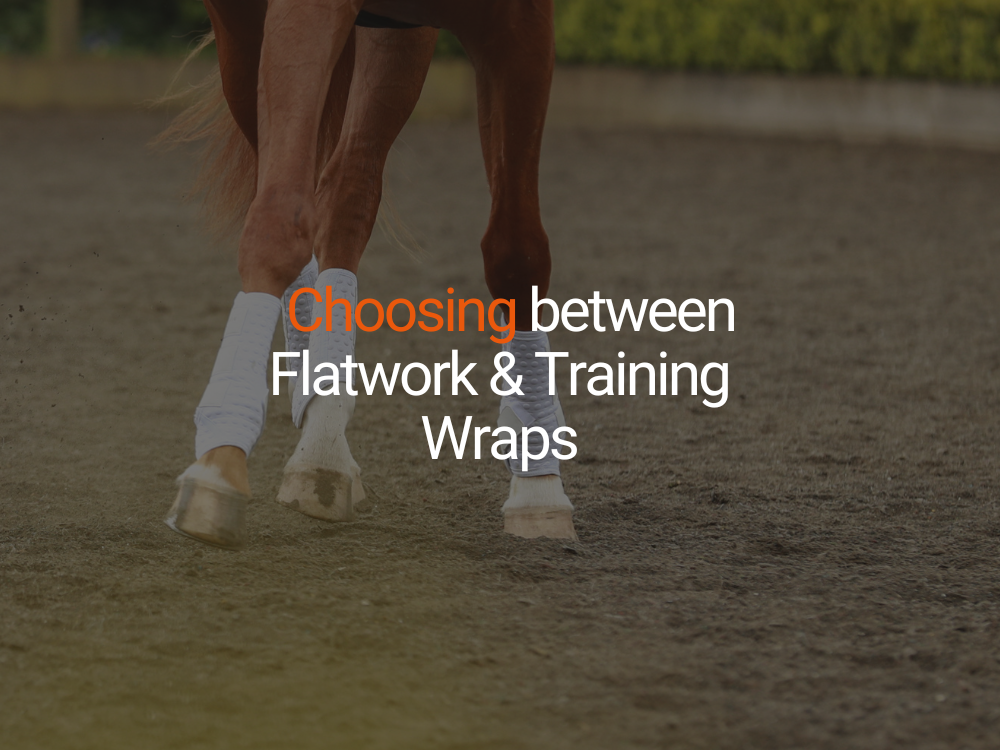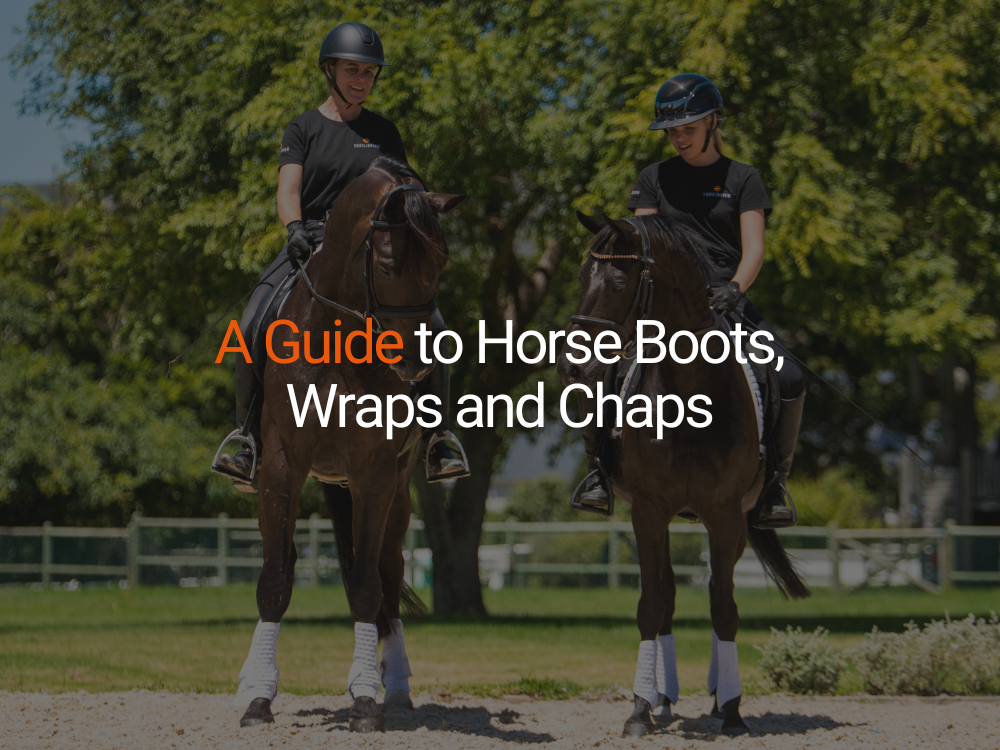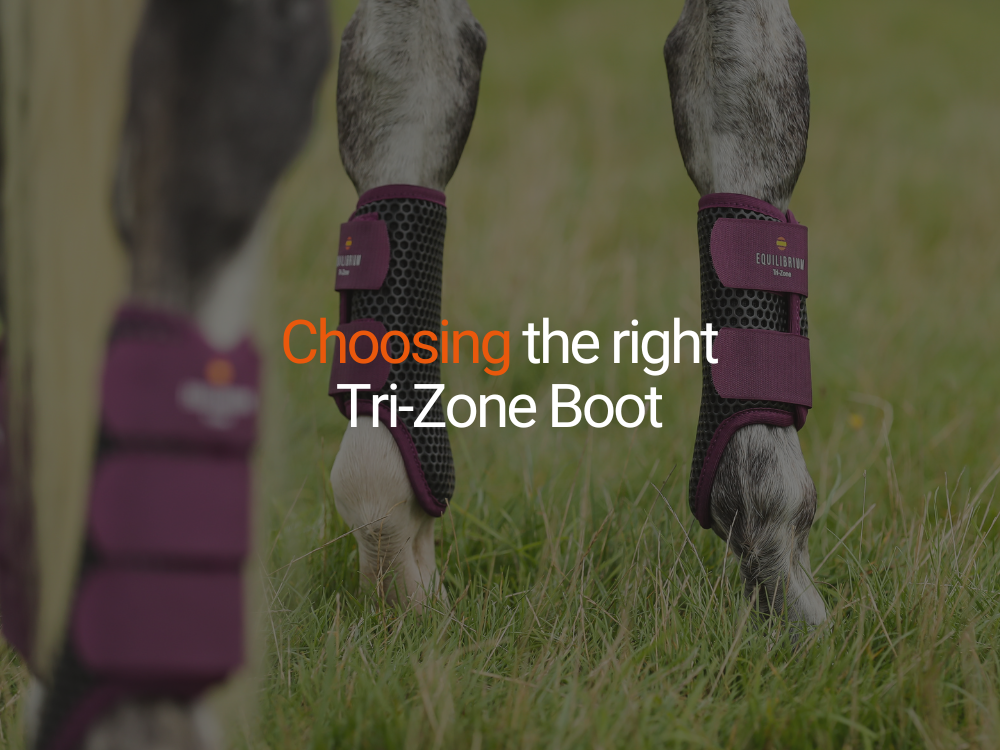
Materials and Boot Structure

Choose the Right Boot for the Job

Spezielle Bestellanweisungen
Pferdebekleidung
Pferdebekleidung
Therapie
Pferdestiefel
Sonne & Flug
Halfter & Führstricke
Teppiche
Reitzubehör
Ernährung
Ernährung
Futter- und Heublöcke
Leckereien
Haynets
Bucket Covers
Shop by Pet
Reichweite
Additional B2B Information
Additional B2B Information
Disziplin
Bildungszone
When considering boots for our horses, whether they are tendon boots, brushing boots, schooling boots or cross country boots, most horse owners are now aware that the ‘modern’ horse boot should be breathable, but do we really understand the importance of choosing a breathable boot for our horses?
The horse’s leg is made of many bones, joints and muscles with a complex structure of tendons and ligaments that support the weight of the horse’s body.
Because of the workload often put upon them, tendons and ligaments are frequent sites of injury and disease.
As tendons and ligaments continually extend and contract to allow the horse to move, they create heat as a ‘by-product’. This is a natural process.
However by design, horses tendons operate near failure limits when exercising – there’s a fine balance!
Work by Alan Wilson and Allen Goodship (1994) at the University of Bristol showed that the temperature inside the tendons of horses galloping without boots on could reach 45°C. This is only second highest to muscle temperatures. The tendon temperatures are very high not only because of heat production within the tendons, but because they have a relatively poor blood supply, which in any other tissue would help remove heat.
In 1997 the same group published the results of a scientific study in which they showed that isolated tendon cells in culture were sensitive to heating.
When the tendon cells were heated for 10 minutes at 45°C, around 10% died, but when they were heated to 48°C for 10 minutes then around 80% died.
These results were also confirmed by a more recent study of equine tendon cells in Japan (Hosaka et al. 2006). This study also showed that the higher the temperature, the more tendon cells that died and that inflammatory mediators were released after heating. Inflammatory mediators are chemicals and hormones within the body that cause inflammation (heat, swelling, pain) and tissue damage. If tendon core (central) temperatures can reach 45°C during a few minutes galloping without boots, it is almost certain that they will get even hotter when boots are being worn.
The fact that the lower leg gets hot during exercise and even hotter when boots are used presents another potential problem: sweating. When boots are removed the leg underneath is often wet from sweat. When skin is in contact with moisture for a long time it becomes hyper-hydrated; this is the effect you see if you stay in the bath for too long.
Wet skin cannot “breathe” normally, and it becomes more permeable allowing greater absorption of anything on the skin. Wet skin is also more susceptible to mechanical damage, with an increased risk of abrasions and grazing. Finally, wet skin is also more susceptible to bacterial or fungal attack and hence a potentially increased risk of conditions such as mud fever, caused by the bacterium Dermatophilus congolensis.
Many boots claim to be breathable, however some boots are more breathable than others.

You may like to ask yourself, do the boots you currently use leave your horse’s legs hot after exercise, are the legs sweaty? Look closely at the materials used next to your horse’s skin. Consider the thickness and padding around the leg. Do they look well ventilated? How do they allow the heat to escape from the leg? Do they have a hard outer shell or rigid panels that cover a large area? You might want to do some research on the materials used within the boot you are using too!

Primarily horse boots are worn to protect the horse’s legs from penetration or concussion injuries during exercise or turnout. But do think carefully about wearing the right boot for the activity you are doing. Often a highly protective boot isn’t necessary for low level schooling and will often be bulky and heavy and without allowing the horse’s leg to breathe.

It’s important to make sure boots are used only during the period of actual exercise and not left on for long periods when the horse is not active, especially after exercise. Removing boots soon after exercise and cooling the legs is advisable.
When developing our Boots, Wraps and Chaps not only do we source advanced technical fabrics with breathable properties, but we actually test these factors in a laboratory. See our Boot Testing Methods.
Our Tri-Zone Range features brushing boots, all the way to breathable cross country boots. Tested in an independent laboratory to ensure that they are not only providing lightweight, flexible protection, but that they are also importantly, breathable too!
Our Stretch & Flex leg wraps were one of the first ‘breathable boots’ on the market. Made from an actively breathable fabric called Stomatex®, Stretch & Flex are designed to offer comfortable, flexible support for dressage schooling, flatwork and light hacking.
Stomatex® is made of a special type of Neoprene which repels external water, while actively pumping moisture away from the skin through tiny pores in the fabric. Originally developed for human athletes, Stomatex® was designed to provide four-way stretch, to enable use around mobile joints, plus excellent support for active limbs, and an outstanding ability to keep the skin dry, so it could be worn comfortably for many hours.
Conclusion: It is important to choose boots or bandages that allow a good rate of heat loss, and consider the length of time boots and bandages are worn by the horse.
Extracts taken from: The Pros & Cons of Equine Boots by Dr David Marlin www.drdavidmarlin.com

Stretch & Flex - Auswahl zwischen Flatwork- und Trainingsbandagen
Stretch & Flex Wraps bestehen aus einem modernen Material namens Stomatex, das dafür sorgt, dass die Beine Ihres Pferdes kühl und trocken bleiben und gleichzeitig während des Trainings gut gestützt und geschützt sind. Beide Wrap-Sets sind wunderbar weich, biegsam und flexibel, sodass sich das Pferd frei bewegen kann, ohne sich eingeschränkt zu fühlen.

Ein Leitfaden für Pferdegamaschen, Bandagen und Chaps
Als Reiter und Pferdebesitzer verlangen wir von unseren Pferden, dass sie auf eine Art und Weise leben und arbeiten, die sie in der freien Natur nicht tun würden. Daher müssen wir ihre Beine vor Verletzungen durch äußere Einflüsse, selbst zugefügte Verletzungen und stressbedingte Probleme schützen.

Die Wahl des richtigen Tri-Zone-Gamaschen für Ihr Pferd
Die Tri-Zone-Reihe wird unabhängigen Tests unterzogen, um sicherzustellen, dass jeder Stiefel seiner jeweiligen Aufgabe gewachsen ist – egal, ob es sich um einen Bürstenstiefel oder einen Stiefel für hohe Belastungen handelt. Unabhängig vom Schutzniveau wird jedes Stiefeldesign optimiert, um sicherzustellen, dass es so atmungsaktiv, leicht und flexibel wie möglich bleibt, um Bewegungsfreiheit und Komfort für Ihr Pferd zu gewährleisten.
Melden Sie sich für unsere Mailingliste an, um Updates zu unseren Produkten, Verkäufen und exklusiven Prämien zu erhalten
Verbinde dich mit uns
© 2025,
Equilibrium.Copyright © 2024 Equilibrium Products Limited. Eingetragen in England und Wales Nr. 03762996.
Wir verwenden Cookies und ähnliche Technologien, um die bestmögliche Erfahrung auf unserer Website zu bieten.
